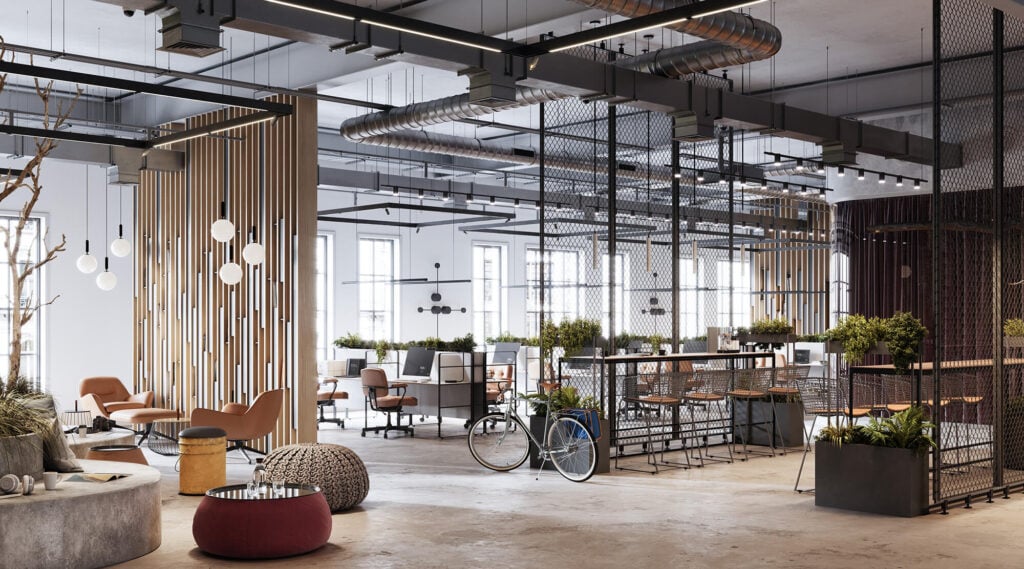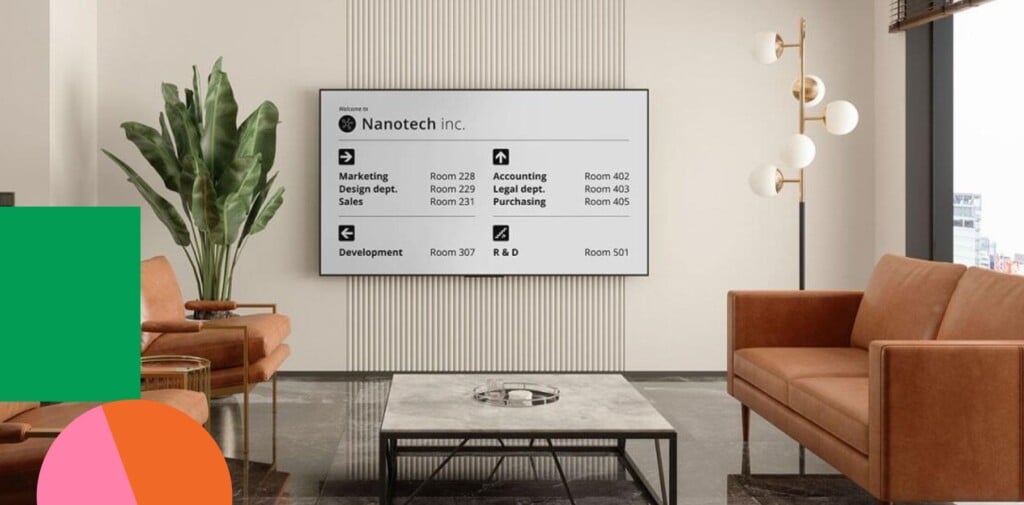What is workplace technology and how to make it work for you?
In 2024, nearly three-quarters of companies using AI tools saw noticeable boosts in productivity, while more than half reported happier, more satisfied employees. Leaders are also feeling the impact: 77% say AI is helping teams get more done, faster.
These advancements create more flexible, satisfying work environments that help attract and retain talent. At the same time, organizations adopting these technologies also gain critical real-time insights, allowing smarter, faster decisions that keep them competitive in an ever-changing landscape.
In this article, we’ll explore how integrating smart workplace technologies can transform your business, from cutting costs to enhancing employee experience and boosting overall performance.
Quickly jump to:
- What is workplace technology?
- How to use workplace technology?
- What types of technologies are used today in the workplace?
- Example of workplace technologies
- The true impact of workplace technology
- Joan, your go-to workplace management system
What is workplace technology?
Workplace technology refers to the tools, software, and systems that help employees do their jobs more efficiently and effectively. This type of workplace technology can range from communication platforms and project management apps to AI-powered analytics and automation software.
It’s important for businesses to regularly assess their use of workplace technology. This process involves examining the suitability of current tools, the potential benefits of adopting new technologies, and the training needs of staff.
By integrating workplace technology into daily operations, businesses can improve collaboration and streamline processes. Ultimately, workplace technology supports teams in staying connected, productive, and adaptable in a fast-changing world.
How to use workplace technology?
Using workplace technology effectively starts with understanding your team’s needs and choosing the right tools to support them. Focus on areas where workplace technology can save time, improve communication, or simplify processes, for example, using project management software to keep tasks organized, or AI-powered chatbots to handle routine employee questions. Providing proper training and ongoing support ensures everyone feels confident using these tools.
To explore the types of workplace technology available today and see real examples in action, keep reading below.
What types of technologies are used today in the workplace?
Technology is undoubtedly a driving force in the evolution of today’s workplace. It not only automates and streamlines operations but also redefines the way employees interact, collaborate, and contribute to their organization’s success. From enhancing communication and engagement to improving data analysis and enabling flexible work arrangements, technology’s influence is pervasive and transformative.

Example of workplace technologies
- Communication and collaboration tools: Modern workplaces rely on platforms that enable seamless communication and teamwork. These tools include instant messaging apps, video conferencing platforms, and document-sharing systems. Examples like Slack, Microsoft Teams, and Google Workspace help employees stay connected, whether they’re working in the office or remotely. Their features include real-time messaging, collaborative document editing, and video calls, making teamwork smooth and efficient.
- Room and desk booking systems: These tools solve the challenge of managing shared spaces in an office, from meeting rooms to individual workstations. Room booking systems allow employees to check availability in real time and reserve spaces, while desk booking systems are ideal for supporting hybrid work setups. Features such as mobile booking, calendar integration, and notifications ensure efficient use of office resources.
- Visitor management systems: Visitor management systems (VMS) are tech tools that streamline the process of tracking visitors, replacing traditional sign-in sheets for improved security and efficiency. They’re ideal for workplaces with high traffic, sensitive data, or strict security. Features include pre-registration, badge printing, automatic notifications, and visitor history tracking. Besides enhancing security, VMS also boost an organization’s image and improve the visitor experience.
- Task and project management tools: Keeping teams organized and projects on schedule is made easier by task and project management platforms. Tools like Trello, Jira, and ClickUp allow users to assign tasks, set deadlines, track progress, and share updates. These tools are invaluable for ensuring accountability and transparency, especially in collaborative environments.
- Integrated workplace management systems (IWMS): An IWMS is a comprehensive system designed to handle various aspects of workplace management. These may include space planning, facilities maintenance, real estate management, capital project management, and environmental sustainability. IWMS can help organizations to optimize resources, reduce costs, and support effective decision-making. They provide a single source of truth for all workplace data, simplifying management and reporting.
- Human resource information systems (HRIS): HRIS are systems that streamline HR processes to make them more efficient. They can handle tasks like recruitment, employee management, payroll, benefits administration, and compliance. By automating routine tasks, HRIS free up time for HR staff to focus on strategic initiatives, such as talent development and organizational culture.
- Customer relationship management (CRM) software: CRM tools are designed to manage customer relationships and interactions. They provide a centralized database of customer information, enabling businesses to track customer interactions, manage sales pipelines, and deliver personalized customer service. Popular CRM tools include Salesforce and HubSpot.
- Task tracking tools: Task tracking tools help teams keep track of tasks and progress towards goals. They enable users to assign tasks, set deadlines, track progress, and generate reports. Tools like Jira or ClickUp can be particularly useful for project management, helping to ensure projects stay on track and on schedule.
- Video conferencing tools: As remote work becomes more common, video conferencing tools have become essential for facilitating virtual meetings and collaboration. Tools like Zoom and Google Meet allow users to hold high-quality video calls with multiple participants, share screens, and even record sessions for later review. These tools help to bridge the gap between remote team members, making it easier to collaborate effectively.
- Cybersecurity tools: Protecting sensitive workplace data is a top priority. Cybersecurity tools, including firewalls, VPNs, and endpoint protection software, shield businesses from threats and ensure secure operation.
- Employee engagement and wellness platforms: Ensuring employee well-being is key to retaining talent. Platforms like Officevibe and Limeade offer wellness programs, pulse surveys, and real-time feedback, helping businesses improve workplace culture and satisfaction.
- Cloud storage and file management: Tools like Google Drive and Dropbox provide secure, centralized access to files, ensuring team members can share and collaborate ondocuments no matter where they are located or what device they’re using.

The true impact of workplace technology
Efficiency and Productivity: The implementation of technology can streamline processes, reduce time spent on mundane tasks, and increase overall productivity. In fact, by 2024, 64% of organizations reported increased employee productivity after implementing digital workplace solutions,
Reduced Costs: Technology can help lower marketing costs and other operational expenses. Automated systems, for example, can help minimize errors and resource wastage, leading to cost.
Improved Customer Service: Technological tools can enhance customer service and user experience, leading to increased customer satisfaction and loyalty, which in turn can boost profits.
Sales Growth: Investments in information technology have been found to increase sales more than other investments. Tools like email marketing, triggered by automation software, can help companies reach more potential customers and increase sales.
Competitive Advantage: Incorporating new technology into a firm’s methodology can help it stay competitive and profitable in the rapidly evolving business landscape.
Joan, your go-to workplace management system
With a diverse and comprehensive portfolio encompassing many of the mentioned workplace technologies, Joan has emerged as the go-to partner for businesses. Whether you’re seeking an all-encompassing workplace solution or prefer separate, specialized solutions, Joan’s flexible offerings are tailored to meet your unique needs and create an efficient, modern work environment.